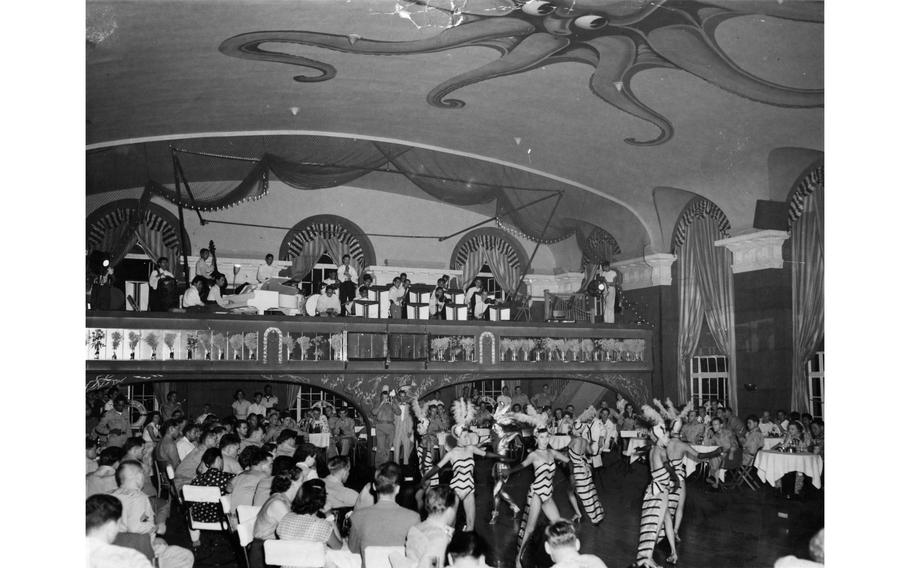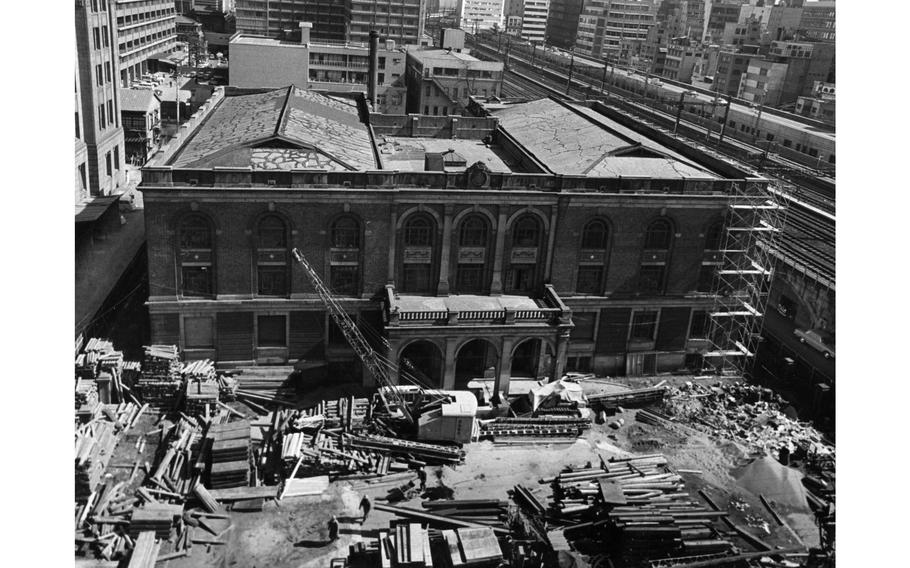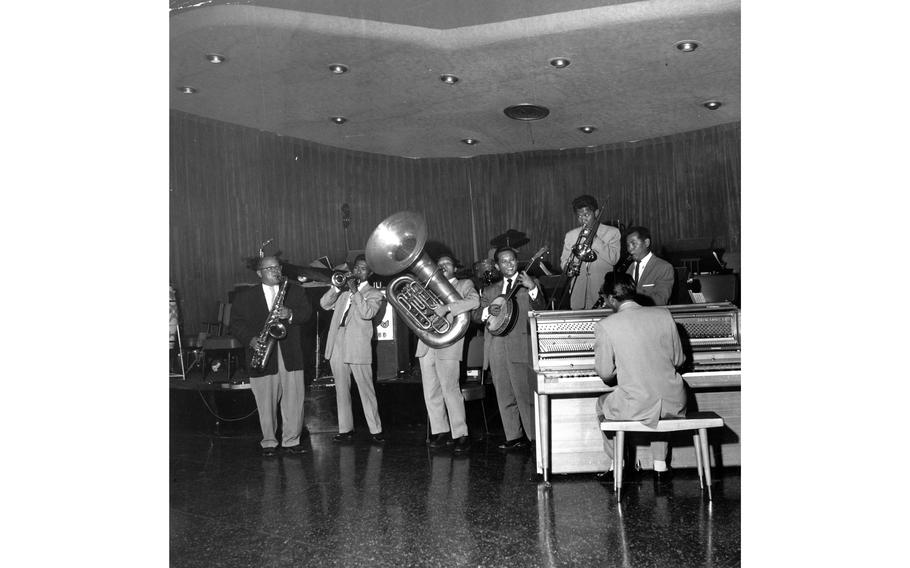
Service members and their dates enjoy the floor show in the Marine Room — one of two ballrooms at The Rocker Four nightclub in downtown Tokyo in September 1952. The Rocker Four Club opened its doors July 4, 1952, during the Korean War and in its six years of existence was the biggest — and to many the swingingest — all-ranks-and-NCO club in the world before closing its doors in March 1958. (Ken Patterson/Stars and Stripes)
This article first appeared in the Stars and Stripes Pacific edition, April 5, 1965. It is republished unedited in its original form.
Archivist’s note: Stars and Stripes celebrity and entertainment columnist Al Ricketts memorialized the Rocker Four Club in his weekly “On the Town” column published Nov. 18, 1965, noting how the club was the place to go if you wanted to see big acts such as jazz legend Louis Armstrong, or American singer, actor and 1950s heartthrob Eddie Fisher perform.
“There is no joy in Sobaville, the Rocker Four Club is being torn down. … It was a sad day, indeed, when the club was shuttered for good, but we predict that thousands of onetime members back in the States will openly weep in their brew when they hear the news of the Rocker’s destruction.”
There were a number of NCO branch clubs throughout Japan operating under Rocker Four management in the 1950s. The Little Rocker at the Hardy Barracks area in Tokyo, The Kozuka Club in Castle Heights, Okinawa, and Ichigaya Club in Pershing Heights, Tokyo.
Kadena Air Base saw the opening of the Rocker Four Club in 1958, operating in the same building until 2015 when it moved into a brand-new building. Although it is not clear from our records if it was under the same management as the other clubs, the fact that it had a 14-member swing band leads us to believe it was the most rocking place to be on Kadena!
TOKYO — Just off this city’s bustling Ginza, wreckers are demolishing a derelict building whose spacious rooms once were filled by millions of happy U.S. servicemen.
The three-story building has stood empty for seven years; a heavy coat of city soot has covered it and helped it fade into obscurity. Now it will be replaced by a modern office building.
But during the 1950s the building housed the Rocker Four Club — the biggest and to many, the swingingest NCO club in the world.

Wreckers prepare to tear down the former Rocker Four building in downtown Tokyo, which during the 1950s housed the biggest U.S. military club in the world. It would be replaced by a modern office building. (Teruhiko Kikuchu/Stars and Stripes)
In those days the building was one of the best known landmarks in Tokyo for servicemen stationed in or travelling through Japan.
The Rocker Four opened its doors July 4, 1952, during the Korean War. Before World War II the building housed offices, but it couldn’t have been better suited for a club.
From the outside its Romanesque architecture made it look dignified enough to be an opera house. Inside it contained 58,532-square feet of floor space.
The Rocker Four quickly became a legend to servicemen who took Korean War R&R in Japan.
The reasons were simple. Any set of travel orders got you inside. Once inside you took your choice in refreshment or entertainment from among two ballrooms, four bars and several restaurants and snack bars.

Vernon Brotman (standing, far right behind piano), leads the 14-member Filipino Rocker Club band at the Kadena Air Base Rocker Club, one of the several “Rocker clubs” for service members dotting the Pacific theater. The band members were all veteran musicians. Brotman played five instruments and also sang. Pictured here are the other members of the band (left to right): trumpet player Silvester Roxas, tuba player Jaime Alarcom, guitarist-violinist “Tiny” Umali, trombonist Rommy Reyes, and piano player Vic Ares. (Bernard Klotz/Stars and Stripes)
Scores of concessions offered everything from tailor-made suits (quick orders a specialty) to samurai swords, the famous nickel shoeshine, and a press-your-uniform-while-you-wait service.
Waiters had their lighters out before a cigarette reached your mouth.
As the Rocker Four’s fame spread it gave a lesson in how to make money without really trying.
It became the biggest military club in the world by all standards — size, membership and popularity.
Its treasury held so much money that free-drink and steak dinner nights became a regular feature.
The club’s size and money also brought it some of the biggest names in American entertainment, in addition to the two house bands that played nightly.
In March 1958, after nearly six years in which 2 ½ million servicemen had crossed its threshold, the Rocker Four closed its doors — forever.